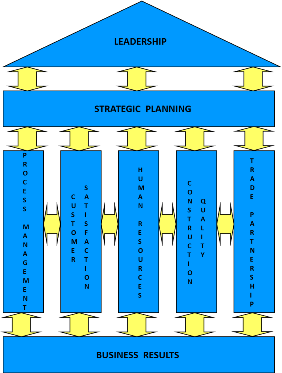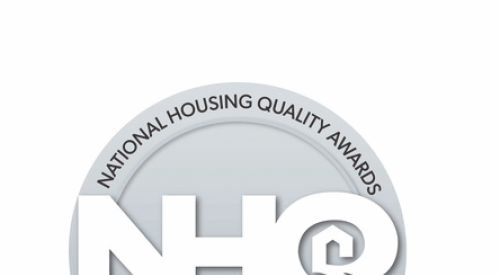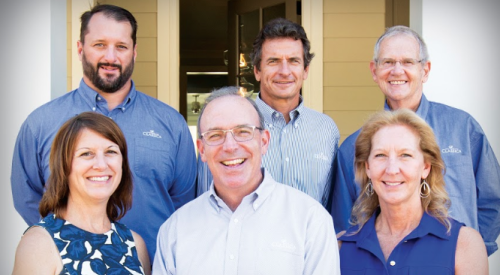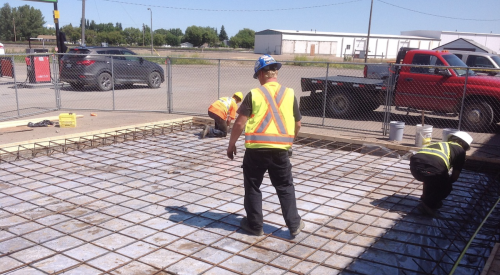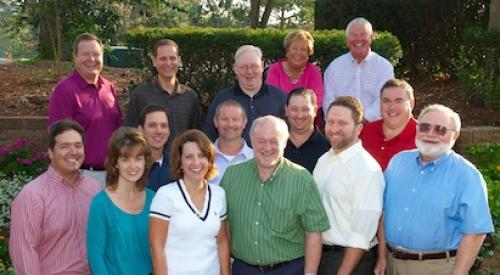Making the cut for a National Housing Quality Award (NHQA) site visit is a major achievement, however, quite naturally many are anxious about the process and view the arrival of a team of Judges as a stressful experience. This stress often arises from the perception that absolutely no mistakes should be made during the site visit and as a response some applicants actually avoid the Judges as much as possible during the visit. While it is natural to be nervous about a visit it should be seen as an opportunity. The Judges are not visiting to tear apart the organization or to be negative about the applicant. Their focus is to accurately reflect what they find and they are the nervous ones since they are responsible for providing the most valuable feedback possible, which can ultimately result in significant improvements.
So how do you ensure that the Judges get a good feel for your company’s culture? How do you ensure that they get all of their questions answered? With all the great things your company does how can you be sure they see it all? Well the answer to each of these questions and many similar ones is that you cannot be sure of ensuring that you can cover everything but obviously the better the planning and execution the closer you can get to your goals. There are a range of things that can be done to make the visit as well organized, efficient and courteous as possible.
The opening and closing meetings of site visits are normally held between the full team of Judges and the senior managers from the company concerned. This meeting is a chance for the groups to be introduced and for the Judges and company to outline the agenda for the visit, logistics, ask questions and clarify anything they think appropriate.
The company can provide an overview or introduction and point out key issues that they want the Judges to be aware of. One method of conducting these meetings is to do so with tables arranged in a horseshoe format to create an effective and open discussion setting with a screen placed at the open end of the horseshoe so that a projector can display directly from a laptop or PC.
This enables the agenda, list of key managers attending and many other documents to be displayed clearly to the entire team and a laser pointer to be used so all members attending can follow exactly what is going on. This now common technology also allows other advantages for example, video, sound and pictures to be displayed or documents to be viewed from various computer drives. More and more ISO based audits and Baldrige site visits are being conducted in this manner to allow fast access to online documents, flowcharts, records and other auditing materials. This of course also allows documents to be updated in an agreed manner real time and printed hard copy to be ready immediately, for example if the agenda needs to be adapted quickly.
Here are some other tips that can ensure that you have a productive and stress free site visit:
Ensure that a schedule of appointments for key people the Judges may wish to speak with is fully completed and rooms assigned for these ‘interviews’ well in advance of the site visit. This will be coordinated between the organizations ‘representative’ and the site visit team leader. Back ups should be provided in case of unforeseen circumstances.
Ensure a number of rooms are free during the visit that can be used to conduct interviews outside the scheduled interview times.
Organize a team to meet the Judges during the introductory meeting. Be selective in regard to the number of people attending this meeting, often too many attend and it becomes unwieldy.
It is crucial that the senior leaders especially the CEO or President attend the opening meeting. This sets the tone and reflects how important this really is to the organization. Structure what the organization team should focus on during the opening meeting comments. Often precious time is lost through repetitious discussion by each member of the team. Focus on the key points you want the Judges to be aware of. But also point out 2-3 key distinguishing issues that set your organization apart.
In addition to the company ‘representative’ being available at all times during the visit as a key contract for all issues it would be ideal to also have one ‘expert’ for each site visit criteria category assigned to each category team leader. In this role the expert can efficiently locate the key people and documents the Judge may require during the visit in addition to acting as a guide. Once again the emphasis is on an effective use of the limited time the Judging team has at the organization.
Use lunch as an opportunity and don’t avoid the Judges! The Judges may have a working lunch in their base area to co-ordinate the post lunch schedule. However, they may decide to eat for example in the company canteen as this provides an opportunity for them to further gauge the atmosphere and culture and perhaps talk with some employees. But don’t leave this to chance. Organize (if the Judges would like) this as an opportunity to have employees talk with the Judges over lunch. This can include your organizations managers, teachers, administrators, shop floor operators, nurses or whatever is relevant. Again this is a chance to ensure that the Judges are getting all the information they need and for you a chance to relate to the Judges all the great things your organization does.
Try to have the majority of information and documentation that will be required for validation and clarification in the Judges ‘conference/meeting room’. Have a computer in the Judges meeting room so that the organizations intranet can be accessed easily. Many organizations use such mechanisms to share information on employee issues, training opportunities, benefits and links to other information.
Provide a phone with an up to date internal phone book so that Judges can contact whomever they need quickly and easily. Include a separate list of key contacts such as the category experts on a separate page. The site visit is a working trip. Ensure the room has a number of large tables for working space a flipchart and/or whiteboard to provide the Judges with an adequate team/project working environment. Other simple items like notepads and pens should be provided.
Have the basic needs of the Judges in mind. While gifts obviously cannot be given this does not mean that simple comforts such as bottled water and sodas cannot be provided in the meeting room. Remember you are striving for excellence and so courtesy is paramount.
Ensure everyone knows that the Judges are coming and are aware of what is going on; often this is not the case. This might mean ensuring that everyone at least has a copy of the relevant NHQA Criteria and the application itself to become familiar with it and so that they can refer to it during interviews if they wish as an aid to focusing their answers.
Ensure that at a minimum those guiding/escorting the Judges, those scheduled for interviews and key managers have a copy of your application document.
Finally, just as with the opening meeting ensure that the senior leaders and especially the CEO or President are available for the close out meeting at the end of the site visit. This is not a time to find out what the results of the visit are but rather are to ensure that all their questions are answered. This is your last chance! This is also the time to thank the Judges for the hundreds of hours they have volunteered to analyze your organization and provide you with valuable and actionable feedback.
Once the site visit is over there is a period of intense curiosity as to how not only the site visit went and how the organization is doing in the overall award process. This curiosity is natural and is needed to spark learning once again.
A review of the site visit process can begin by having the organization representative, category experts and others that worked with the Judges to submit notes on their views of how the process went based on the questions they were asked. These members can be brought together to form a summary of the visit. If you feel that something has been overlooked or if data had not been available at the time, email this to the lead Judge after the site visit.
This is not to try and discern the score you think the Judges will give but to focus as early as possible on Opportunities for Improvement (OFI’s). This would include evaluating questions that helped to uncover gaps or raised critical issues. All of these members can be brought together in a discussion and to finalize the ‘debrief report’ and help to create an announcement that should be made to provide feedback to the whole organization. This would include thanking all employees for their hard work followed by highlighting the next focus, that of preparing for the feedback report and addressing the OFI’s it will identify.
Such preparation for a site visit ensures that the energy and momentum gained in the lead up to the application submission is sustained up to and during the site visit can be continued. By also preparing to respond to the feedback report in a structured manner this momentum can be continued. This avoids the common ‘resting on ones laurels’ or ‘freezing’ that often occurs when the application is submitted. This results from mistaking the application submission as the achieved goal. When in actual fact the goal is implementing the actionable OFI’s identified in the feedback report.
